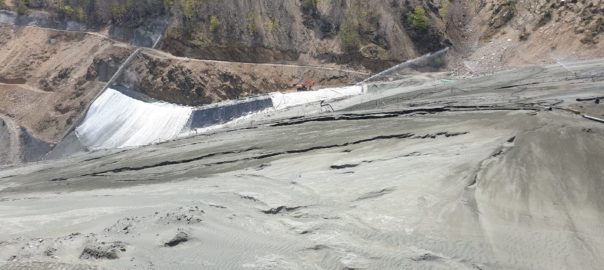Central Asia Metals Ltd’s (CAML) first sustainability report highlighted just how far the base metal producer is going to improve safety, reduce its environmental impact and stand out from the rest of AIM-listed mining crowd.
CAML has long been recognised as the most generous dividend payer on the AIM Mining stage, in London, and, COVID-19 impacts aside, it looks like retaining this reputation into the future.
Its technology credentials are less well known, though, and belie its less than $300 million market capitalisation.
In addition to being brave enough to apply in-situ leaching technology to what was viewed as legacy ‘copper waste’ at Kounrad, in Kazakhstan, the company was the first company to use solvent extraction and electrowinning in the country when it started successfully operating the dump leaching operations in 2012, according to CEO Nigel Robinson.
The company, in 2017, acquired the Sasa zinc-lead-silver underground mine in north Macedonia, to complement Kounrad, and it is this asset that will be subject of much of the company’s future innovations.
The just published sustainability report showed, in 2019, Sasa lowered its net water consumption by a substantial 43% thanks to a recycling initiative the company previously put in place.
This saw the percentage of contact and recycled waters used in its flotation plant go from 0 to 47%, equating to a reduction of freshwater abstraction for the flotation plant from 90 l/s at the start of 2019 to 48 l/s at the end of the year, it said.
From this year onwards, the Sasa team intends to continue to maximise the use of recycled waters wherever possible, it said.
Related to water, the company is also, like many miners across the sector, evaluating the future of its tailings dams.
CAML manages five tailings storage facilities (TSF) at Sasa, all of which are constructed using the downstream technique, widely viewed in the industry as the safest design. Construction of the newest dam, TSF4, was completed in 2019, with this now the main active facility.
Yet, with tailings deposition creeping up over the last few years (733,021 t was deposited last year, compared with 718,303 t in 2018 and 709,989 t in 2017), it looks like the newest facility, which holds 4.5-5 Mt, could hit its capacity in 2025/2026.
During 2019, the Sasa operations team completed a life of mine study to determine the optimal mining method for the operation going forward and, based on the study, the board took the decision, in principle, to change the mining method to cut and fill stoping.
This method – deemed more appropriate both in terms of its operational benefits and environmental and social impacts – would see the voids created from mining underground filled with a paste comprised, in part, of process plant tailings.
“Initial estimations suggest that over 40% of Sasa’s life of mine tailings could be stored underground,” the company said in the report, meaning the construction of future downstream tailings storage facilities would not be required.
Yet, on top of this, dry stacking is also being weighed up, according to Robinson.
“The likely solution is using at least 40% of future tailings as part of the paste backfill, plus utilising the full capacity of the recently constructed facility and then dry stack tailings as well,” he told IM, adding that the company was still carrying out technical studies on these aspects. These studies were scheduled for completion in the second half of the year.
Lastly on the Sasa TSF, CAML said its Sustainability Director, in 2019, attended a conference in Almaty, Kazakhstan, where a draft of the proposed Global Tailings Standard was presented.
The International Council on Mining and Metals, the United Nations Environment Programme and the Principles for Responsible Investment co-convened the Global Tailings Review in February 2019 to establish this international TSF standard following the tailings dam failure at Vale’s Corrego do Feijão mine in Brumadinho, Brazil, earlier that year.
The draft standard was made available for public consultation in November 2019, but the publication of the full standard was recently postponed following the COVID-19 outbreak.
Having reviewed the proposed standard internally, CAML said its intention, in 2020, was for Sasa to be audited externally relative to this standard.
At the underground mine, itself, CAML is investing in a Wi-Fi communications backbone to improve health and safety and operational efficiencies at the mine, Robinson said. This will allow the company to know where each machine is at any given time and, in terms of efficiency, “we’ll be able to monitor utilisation much more accurately and, therefore, identify areas for improvement”, he added.
Another development that could both boost efficiency and safety at the mine, is the introduction of remotely-operated LHDs.
Robinson said two Epiroc ST7 Scooptrams from its existing fleet were being fitted with ‘line of sight’ capabilities to enable personnel to stay outside of the machine and operate the vehicles in areas that may be susceptible to rockfalls and other hazards.







